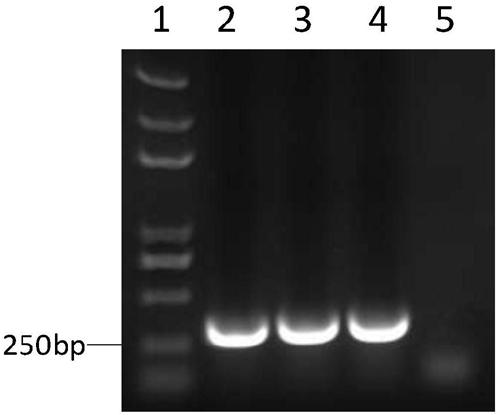Seneca valley virus SVV-ZM-201801 and application thereof
A technology of SVV-ZM-201801 and Seneca, which is applied in the fields of biotechnology and food products, can solve problems such as economic losses, lack of vaccines, and troubles in the pig breeding industry, and achieve low pathogenicity, good immunogenicity, and virus The effect of high titer
- Summary
- Abstract
- Description
- Claims
- Application Information
AI Technical Summary
Problems solved by technology
Method used
Image
Examples
Embodiment 1
[0038] Example 1 Isolation of Seneca Valley Virus
[0039] 1. Tissue collection and processing
[0040] Pig lung, liver, tonsil and other tissues were collected from a pig farm, cut into pieces, added 10 times the volume of DMEM medium containing penicillin (400U / ml) and streptomycin (400μg / ml) to grind, 4°C, 10000rpm centrifuged for 10min, The supernatant of the grinding solution was taken and frozen at -80°C for later use.
[0041] 2. Tissue pathogen detection
[0042]Take 200 μl of the above grinding solution, use Beijing Quanshijin Biological Company DNA / RNA Extraction Kit to extract DNA and RNA according to the instructions, and then use Quanshijin Reverse Transcription Kit to reverse transcribe RNA into cDNA. Using the extracted DNA and reverse-transcribed cDNA as templates, respectively use foot-and-mouth disease (FMDV), swine fever virus (CSFV), porcine reproductive and respiratory syndrome virus (PRRSV), porcine pseudorabies virus (PRV), and porcine circovirus type ...
Embodiment 2
[0065] Example 2 Pathogenicity Experiment of Seneca Valley Virus SVV-ZM-201801
[0066] Ten 14-day-old piglets negative for Seneca Valley pathogens and antibodies were screened and randomly divided into 2 groups with 5 piglets in each group. The test group was nasal cavity challenge, and each pig was inoculated with 10 8.5 TCID 50 Passaging virus liquid; each pig in the control group was inoculated with an equal volume of sterile PBS solution nasally. The status of the pigs was observed daily, and the rectal temperature was measured and recorded.
[0067] Observed continuously for 10 days, the body temperature of the test group and the control group all fluctuated within the normal range, and the observation of clinical symptoms found that the pigs of the test group and the control group had normal appetite, no blisters occurred, and no pigs died, and all survived ( Figure 4 ). The above data showed that the Seneca Valley virus isolate SVV-ZM-201801 was a low-virulence st...
Embodiment 3
[0068] Application of Example 3 Isolated Strain SVV-ZM-201801 in the Preparation of Seneca Valley Virus Live Vaccine
[0069] 1. Seneca Valley Virus Live Vaccine Preparation
[0070] The SVV-ZM-201801 isolate was inoculated in PK-15 cells or BHK-21 cell monolayer or suspension cells at MOI=0.01 for continuous passage, and the virus liquid was harvested. After repeated freezing and thawing for 3 times, the supernatant was collected by centrifugation, and the virus was determined. Titer. After passing the test of sterility and exogenous virus, add a protective agent containing 10% sucrose and 3% gelatin to the virus solution at a volume ratio of 1:1, mix well, and freeze-dry to prepare a vaccine. The virus content per head is not low at 10 6.0 TCID 50 .
[0071] 2. Vaccine safety test
[0072] A total of 12 healthy piglets around 14 days old and negative for Seneca valley antigen and antibody were selected and randomly divided into 4 groups with 3 piglets in each group. Th...
PUM
 Login to View More
Login to View More Abstract
Description
Claims
Application Information
 Login to View More
Login to View More - R&D
- Intellectual Property
- Life Sciences
- Materials
- Tech Scout
- Unparalleled Data Quality
- Higher Quality Content
- 60% Fewer Hallucinations
Browse by: Latest US Patents, China's latest patents, Technical Efficacy Thesaurus, Application Domain, Technology Topic, Popular Technical Reports.
© 2025 PatSnap. All rights reserved.Legal|Privacy policy|Modern Slavery Act Transparency Statement|Sitemap|About US| Contact US: help@patsnap.com



